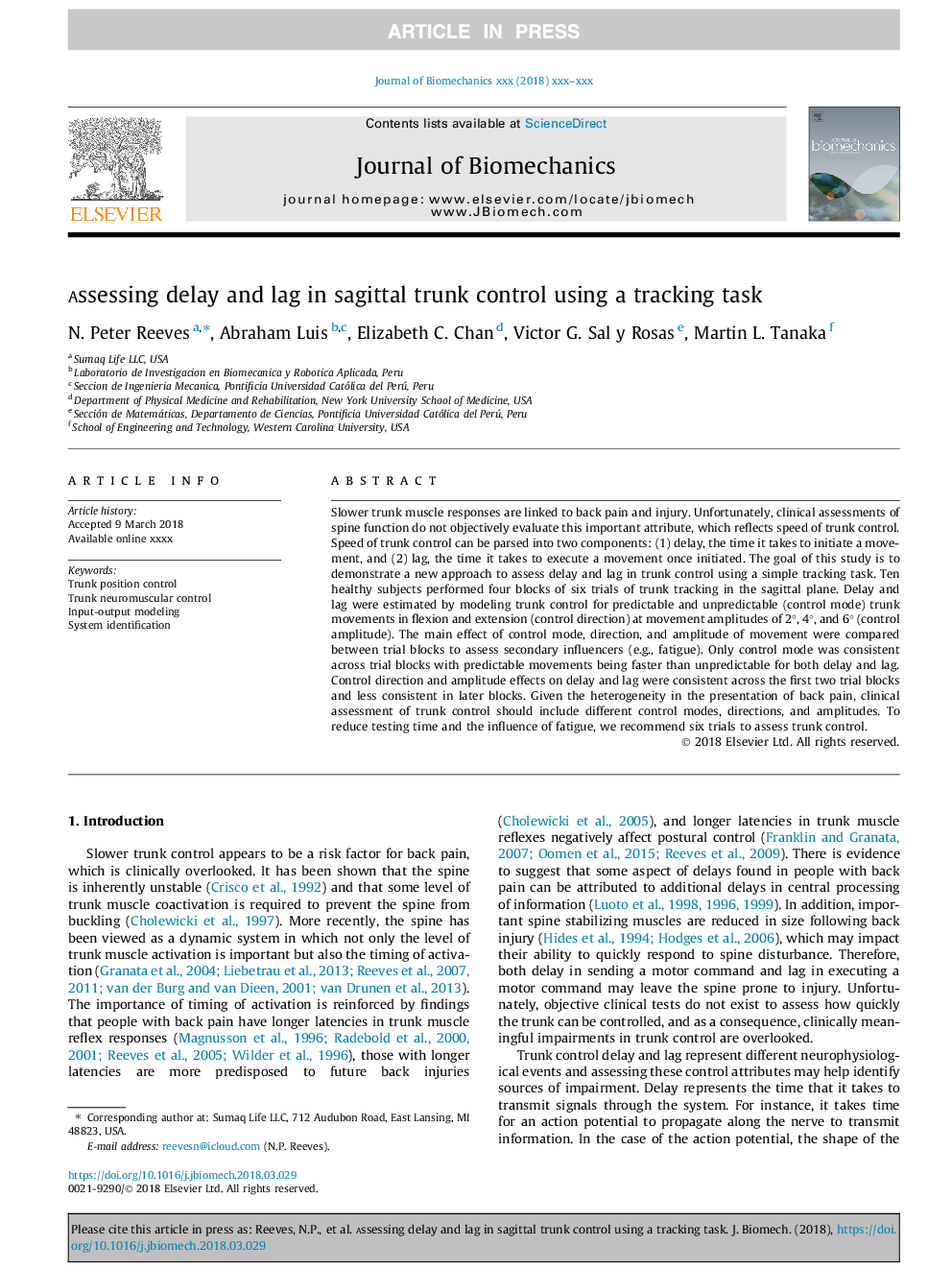| Article ID | Journal | Published Year | Pages | File Type |
|---|---|---|---|---|
| 7236094 | Journal of Biomechanics | 2018 | 7 Pages |
Abstract
Slower trunk muscle responses are linked to back pain and injury. Unfortunately, clinical assessments of spine function do not objectively evaluate this important attribute, which reflects speed of trunk control. Speed of trunk control can be parsed into two components: (1) delay, the time it takes to initiate a movement, and (2) lag, the time it takes to execute a movement once initiated. The goal of this study is to demonstrate a new approach to assess delay and lag in trunk control using a simple tracking task. Ten healthy subjects performed four blocks of six trials of trunk tracking in the sagittal plane. Delay and lag were estimated by modeling trunk control for predictable and unpredictable (control mode) trunk movements in flexion and extension (control direction) at movement amplitudes of 2°, 4°, and 6° (control amplitude). The main effect of control mode, direction, and amplitude of movement were compared between trial blocks to assess secondary influencers (e.g., fatigue). Only control mode was consistent across trial blocks with predictable movements being faster than unpredictable for both delay and lag. Control direction and amplitude effects on delay and lag were consistent across the first two trial blocks and less consistent in later blocks. Given the heterogeneity in the presentation of back pain, clinical assessment of trunk control should include different control modes, directions, and amplitudes. To reduce testing time and the influence of fatigue, we recommend six trials to assess trunk control.
Keywords
Related Topics
Physical Sciences and Engineering
Engineering
Biomedical Engineering
Authors
N. Peter Reeves, Abraham Luis, Elizabeth C. Chan, Victor G. Sal y Rosas, Martin L. Tanaka,
